Hiking. Trekking. Tramping. It’s called many things depending on where you hail from. While some may think it’s necessary to live near the mountains and be in tip top shape in order to go on a significant hike, I’m here to let you in on a little secret. Plenty of serious treks, from day hikes to multi-day journeys, can be done by almost anyone.
I’m living proof of this phenomenon, as I’ve never lived in or near the mountains, love drinking heavy beers, and eating pizza and fried food dipped in ranch more than I care to admit. But as long as you’re somewhat active, get a plan together for getting in a little better shape, and know what you’re getting into, you, too, can tackle any of the 10 incredible treks below. This list is sure to appeal to any lover of the outdoors. From day hikes in Patagonia to multi-day adventures to famous historical sites like Machu Picchu to descending into the Grand Canyon, nearly anyone, with the right amount of determination, can accomplish any of the treks on this list.
Trekking into the Grand Canyon, Arizona

Why?
Immediately upon seeing it for the first time, it takes your breath away. But if you think the view from the top is great, imagine what it looks like from the bottom. The Grand Canyon in northern Arizona brings about five million visitors a year, with only a tiny percentage of those descending to the bottom, so solitude, unique views, and being at the bottom of the freaking Grand Canyon should be reasons enough.
How?
If hiking the Grand Canyon, it needs to be planned out several months in advance. The hike itself can be done in two days, though I suggest taking an extra day at the bottom to explore and rest before ascending back up. There are several trails to take. The most popular route has hikers descending the South Kaibab Trail (about 6.5 miles) and ascending the Bright Angel Trail (about 9 miles). If you’ve never hiked a canyon before, the hardest day is the last, getting out, so taking an extra day in between to recover is advisable. Besides, when’s the next time you’re going to be able to say you’re at the bottom of the Grand Canyon?
When?
The best time is spring or fall as the weather is nicest. Summer months get hot, sometimes getting over 100 degrees, and it’s very dry. It’s possible to hike the Canyon in the summer, just be prepared to deal with the elements. Winter months see snow in certain parts, especially on the north rim, but you can hike it in these months.
>> Read Beyond the Rim: Exploring the Depths of the Grand Canyon for more in depth information.
>>Learn more about Arizona in our travel guide
Chesler Park Loop in Canyonlands National Park, Moab, Utah
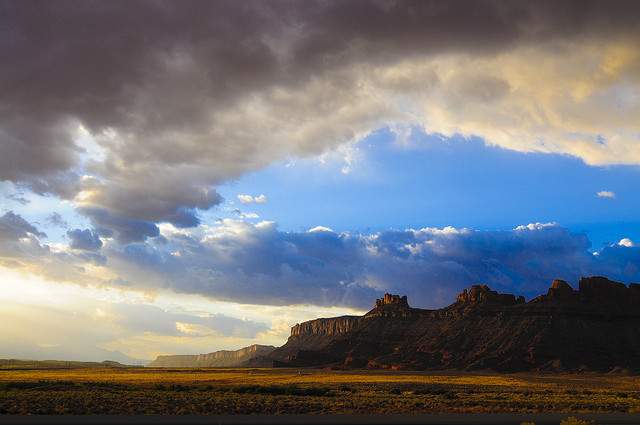
Why?
Moab, located on the eastern side of Utah, is a haven for the outdoorsman, from serious trekkers to bikers to climbers, there’s something for people of all levels of experience. As far as hiking goes, the options truly are endless, from Arches and Canyonlands National Parks to the nearby La Salle Mountains to the world renowned slickrock all over Moab. The focus for this area is a day hike in Canyonlands National Park, a place that is so desolate, you may think it’s closed, even during high season, which makes it a great place to truly get away from it all and experience nature in its finest element.
How?
The Chessler Park Loop in the popular Needles area of the park gives a great smattering of what this area of Utah has to offer, from the famous arches to canyons to slickrock, and though a fairly long day hike, it’s doable for about anyone because of the lack of elevation change. From the base of Elephant Hill, it’s about a 12 mile loop that can be done in a day. Hikers get to hike through slickrock to a rare meadow and through some tight spots, getting a great sample of Canyonlands.
When?
As with the Grand Canyon, most of the same rules apply here. Spring and fall are the best, while summer can provide relentless heat with little to no shade. While winter can produce a bit of snow, it’s not a bad time for hiking as the temperatures typically don’t get below freezing. The park is open year-round.
>> Wanna add Utah to your indie trip?
Mills Lake and Jewel Lake, Rocky Mountain National Park, Colorado
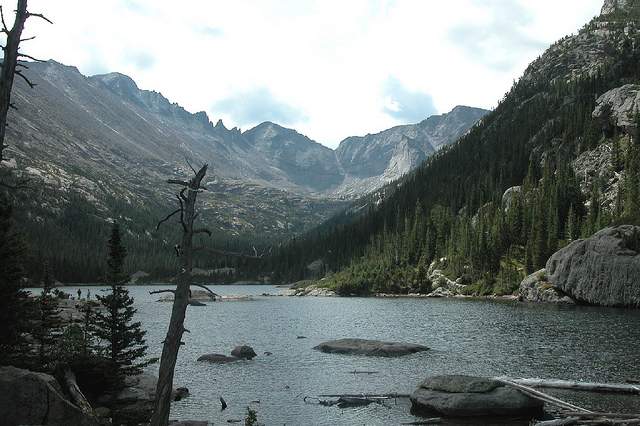
Why?
It shouldn’t take too much convincing to get any nature lover to Colorado and the famous Rocky Mountains. The Rockies are a wonderland for both Paul Bunyan types and the casual hiker and outdoorsman. Rocky Mountain National Park, located outside Estes Park, about an hour and a half north of Denver, has over 355 miles of hiking trails, so tailoring something to your specific needs should be easy. We visited this park early in our hiking days, so we were totally inexperienced. You can be sure this day hike is easily doable for anyone while also providing a great experience, stunning views, and an introduction to this rugged mountain range.
How?
Hikers can take a shuttle to the Glacier Gorge Junction trailhead, where the hike to Mills and Jewel Lakes begin. It’s only about 6 miles out and back, and being a relatively easy hike with only a minor up and down elevation change, it is popular, and thus, crowded. The crowds are worth it though as the hike provides some spectacular views of the continental divide and various peaks, and passes several waterfalls and lakes. Once reaching Mills Lake, the crowds thin out a bit on the way to Jewel Lake, and hikers have the option of branching off to other well marked trails if you have enough left in you. Just remember you have to make it back!
When?
Elevation at Rocky Mountain National Park spans 8000-12,000 feet, so obviously altitude is going to be a factor. Snow on this particular trail, and around the park, can be found year-round. Hiking season is typically May to September, with winter months sometimes making much of the park impassable. Be aware that the mountains can be quite fickle, and if you’ve never visited them, be prepared for about any weather, even in May-September. We had to shovel 6 inches of snow off our camping site in June, then it was 75 degrees and sunny the following day, so come prepared.
>> Find out why indie travelers should go to Colorado
Volcan Villarica, Pucon, Chile
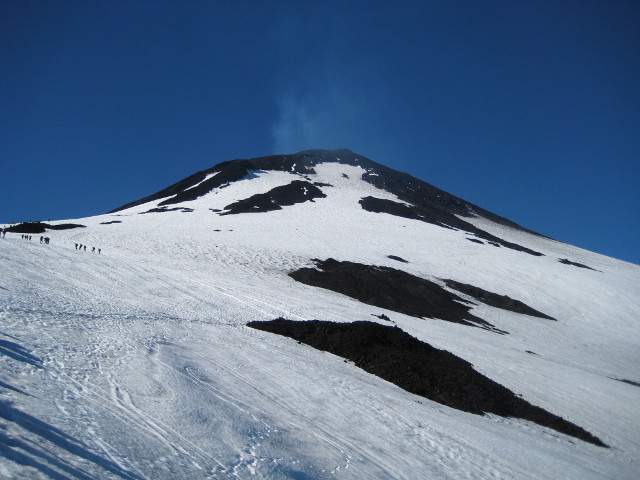
Why?
Uh, well, because you’d be hiking to the top of a freaking volcano! Volcanoes are pretty damn cool, and if you get the chance to hike to the top of one, I highly recommend taking advantage. This is a day trip as well, leaving early in the morning (about 5am) and returning mid afternoon (around 2-3pm), and it has to be hiked with a company and group. If hiking to the top of an active volcano with views of several other volcanoes all around you isn’t enough to intrigue you, then maybe finding out that everyone gets to slide back down the volcano, on their butts, in a luge-like track, will entice you into taking part in this journey.
How?
Choosing a company is the first thing you do, and they do the rest of the leg work, from providing boots, backpacks, axes (yeah, that’s right, you get to carry an axe), transportation, guides, and lunch. You hike as a group, which has its pros and cons, stopping several times on the way up. The important thing to remember, though it can be hard while hiking in a group, is to go at your own pace. One of the guides will stay with the slower members of the group, so don’t overexert yourself to stay with the faster hikers. Once at the top, the views are incredible, the sulfur fumes difficult to take, and everyone just takes in the fact that they’re standing on top of a smoking, gurgling, active volcano. Then all hikers gear up for the ride back down, which has you feeling like a kid on snow day. It is truly an experience like no other.
When?
Volcan Villarica can be climbed at any time of year, but be aware that hikes can be canceled day of due to inclement weather. The peak season is the summer months of December-February. In winter months of July-September, both skiing and hiking to the top is possible. Hiking in the summer months can see you walking in the snow while wearing a t-shirt.
>>Check out our travel guide if you wanna go to Chile and find a flight on BootsnAll
Patagonia
The next three hikes were both done as day hikes out of the same town, El Chalten in the Argentine side of Patagonia. El Chalten is a town known for its abundance of trekking opportunities. Any of the three day hikes explained here can be combined into multi-day treks while camping along the way. Tents and camping equipment can be rented from one of the many outfitters in town, and there are several camp sites along all the trails highlighted below. If you are here during summer months when it’s light until 10-11pm, staying in town and sleeping indoors in a bed is a great way to combine long day hikes with a bit more comfort.
Glaciar Torres and Lago Torres, El Chalten, Argentina in Patagonia
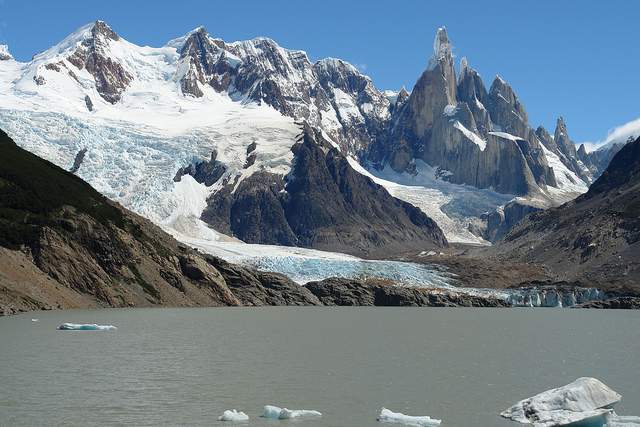
Why?
Have you ever seen a glacier up close? With a lake in the foreground and mountains behind it? Even if you have been lucky enough to do so, I’m guessing it isn’t a common occurrence, so having the opportunity to hike to something so beautiful and unique is a great experience. The hike is fantastic because of the views of the peaks of Cerro Torre and Fitz Roy all along the trail. It’s an ever-changing scene with clouds constantly rolling in and out, with the sun peaking through, being totally obscured, or booming brightly, all sometimes within minutes of each other in the wacky Patagonian weather.
How?
Every bus coming into town in El Chalten stops at the ranger station for a short introduction to the area and a presentation of all the available trekking, climbing, and camping opportunities. All visitors will also have the opportunity to speak with a ranger about specifics and will receive a very helpful map, complete with trail markers, camping spots, and mileage and time approximations. The hike to Lago Torres begins in town, with a steep initial climb as the only real challenging part. The rest is up and down, crossing a few creeks, through a few fields, through some forest, and with views of many different types of landscapes. The views of the lake and glacier grow larger and larger as you get closer. This particular trek was approximately 15 miles (24km) out and back and took us about 8 hours.
When?
Summer (December-February) is the best time to visit El Chalten and most of Patagonia. The temperatures are manageable, but you do have to deal with crazy strong winds and possible showers. The winter months see a lot of snow, so trekking isn’t really possible. Spring and fall sees better weather, but honestly, it’s always a crapshoot in Patagonia with its unpredictability at all times of the year. The same weather applies to the rest of the hikes discussed in Patagonia.
>> Discover why you should visit Argentina now
Lago and Glacier Piedras Blancas, El Chalten, Argentina in Patagonia

Why?
Glaciers, lakes with floating icebergs, rugged peaks, more lakes and glaciers, and stunning views the entire way make for a memorable trek. Sitting and watching glacial melt waterfalls tumble over the rocks only to disappear with a strong gust of Patagonian wind at Lago Piedras Blancas, with the glacier of the same name behind it, was a cool thing to behold.
How?
The initial climb after leaving town was fairly intense and went straight up for the first hour or so before leveling off to an up and down. After the first section of hiking in the forest, you come to a clearing offering exceptional views of both the town and valley below, which is a great spot for lunch or a quick snack. Then it’s back into the forest for some up and down hiking until arriving at a river, Rio Blanco. One needs to follow the river to head to Lago and Glacier Piedras Blancas. This is the only section of trail that isn’t well marked, with a walk along the river leading to the lake. The final hour or so requires some minor bouldering, climbing, jumping, and scooting any which way you can over massive rocks until finally reaching the destination, which was abandoned except for us.
>>Find a flight to Argentina
Fitz Roy, El Chalten, Argentina in Patagonia
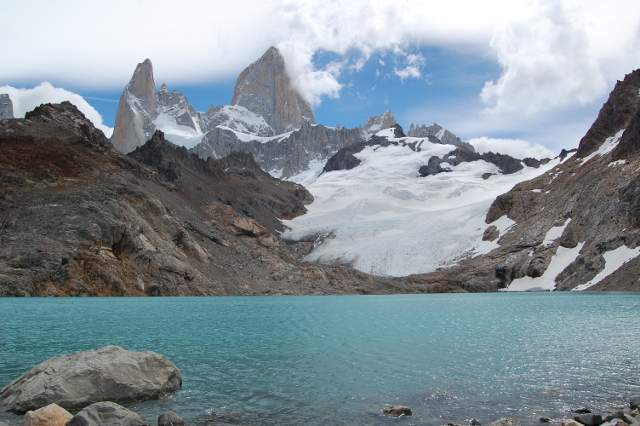
Why?
Fitz Roy and Cerro Torre are visible on the bus ride into El Chalten, and whenever the clouds part, the massive peaks loom over the city. So a hike ending near the base of Fitz Roy, seen from everywhere around El Chalten, is the most challenging, yet most rewarding, of the hikes here. Sitting in the shadows of the massive peak of Fitz Roy and having some lunch was a memorable and satisfying experience.
How?
The first two-thirds of this hike is the exact same as the hike to Lago Piedras Blancas. If Fitz Roy is your destination, you must turn at the aforementioned Rio Blanco and start heading up instead of along the river. The trail is well marked, and a camp site is nearby in case you would want to hike in and stay there for a few nights, making shorter hikes to each of your destinations. The remaining hike to Fitz Roy was the most challenging of the three hikes we did around El Chalten. It was straight up, with switchbacks taking hikers slowly back and forth, back and forth. The payoff was worth it, though, as the destination involved seeing Fitz Roy up close, along with another glacier and a few lakes, not to mention the spectacular views of the surrounding area.
>>Read the one-page indie travel guide to Argentina
The W Trek, Torres del Paine National Park, Chile in Patagonia

Why?
Parque Nacional Torres del Paine is a mecca for trekkers. Hikers of all levels can tackle parts of this national park plucked straight out of a fairy tale. It truly is one of the most beautiful places on Earth. Travelers to Torres del Paine have options galore when it comes to hiking, from taking day trips to 10+ day extravaganzas. The W trek is most popular and will be the focus here. This is one of the more challenging hikes I’ve ever personally done, but with the right amount of planning, anyone can accomplish it.
How?
Options, options, and more options greet trekkers at Torres del Paine. Home base for treks into this park is Puerto Natales, about two hours away. If going in high season (December-February), plan ahead, at the very least a few weeks, if not a month or two. Once you know that, the options really are endless. Camping, staying in refugios (hostels/hotels-most don’t have private rooms), or a combination of both is possible when hiking TDP, which is the nice thing for those of us not in tip top shape. If you are visiting the park as part of a larger trip, have no fear, as tents, sleeping bags, and all other necessary equipment can be rented from any number of places in Puerto Natales.
Another option is to rent tents from the refugios in the park. This will have to be done in advance, and it will be pricier, but the advantages of not having to carry a tent are HUGE. The tent is also set up for you upon arrival at the campground, which is nice after hiking for 8-10 hours a day. Trekking TDP takes planning, and an entire article wouldn’t be enough to go over all options; however, the Erratic Rock hostel in Puerto Natales is a great asset to have. They give free presentations 365 days a year about hiking in the park, and you don’t have to be staying there to attend. Research and go to this; it’s invaluable.
When?
Patagonian weather is ludicrous, no matter the time of year. The same rules apply here as to the rest of the hikes described for this region. Summer (December-February) is best, while also most crowded and expensive, but don’t think you’re getting optimal weather. It’s likely to rain, be clear and sunny, and have insane winds that can literally knock you over, all in the same day. It’s no joke, so come prepared with your gear or rent what you need in Puerto Natales. I can’t stress enough how helpful the presentation at the Erratic Rock was. If you can schedule the presentation at least two days before hiking, you’ll be golden.
>>Read about the highlights of Patagonia
Colca Canyon, Peru
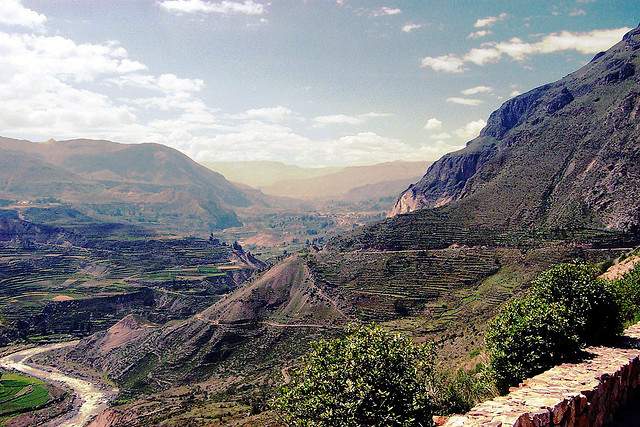
Why?
It’s the second deepest canyon in the world and twice as deep as the Grand Canyon. One of the biggest birds in the world, the condor, calls Colca its home. The ruggedness of Colca is a sight to behold, and the fact that there are families, communities, and even churches at the bottom of the canyon is one of the most impressive things about descending below the rim here. The altitude can be a factor, but as long as acclimating is considered, anyone should be able to hike here.
How?
Arequipa is the jumping off point for treks into Colca. Options abound again, so check around at various hostels and travel agents in town. If you’re concerned about the difficulty, try to find a trek that takes 3 days instead of 2, and make sure that your group stays at the Oasis at Sangalle one night and with a family the other. The experience at both places is incredible. Taking an extra day has hikers descending into the canyon on day one and staying with a family, then hiking along the bottom the second day while staying at the aptly named Oasis, complete with a pool and bar and an entire day to rest and relax before heading out on day three. I’m not saying I did this, but try not to have too many beers the night before your ascent.
When?
Colca can be trekked year-round. Temperatures don’t vary too much throughout the year, but the rainy season may see some treks canceled. November-March is the rainy season in this part of Peru, with the rest of the year remaining rather dry. The altitude means that sun protection is necessary during the day, and nights can get chilly, so come prepared.
>> Why should you go to Peru?
>>Learn about travel in Arequipa
The Classic Inca Trail to Machu Picchu, Peru

Why?
When considering hiking the classic Inca Trail, you may hear detractors. It’s too expensive. It’s too crowded. There are better, cheaper options. While there may be some truth to the complaints, there’s a reason it’s the most popular and thus, most expensive way to get to Machu Picchu. The Incas took this very same trail to the sacred city over 500 years ago. Many of the same steps along the trail remain, along with a plethora of other ruins. But the main reason for taking this route to Machu Picchu? The Sun Gate. Only those hiking the Inca Trail arrive at the Sun Gate at sunrise the last day, seeing Machu Picchu below for the first time. Walking through the Sun Gate and glimpsing the infamous Lost City of the Incas was one of the most powerful moments of my life.
How?
Booking in advance, far in advance depending on the time of year, is a necessity. Waiting until you arrive in Cusco is a mistake as chances are you won’t get in on a hike on the classic Inca Trail. Going with a reputable company is advisable. It is more expensive, but definitely worth it. Each company does things differently, from the food they serve to their treatment of porters. Do some research and go with the company that has the best reviews. This is something you don’t want to go cheap on. As a reference, we went with Peru Treks, which was a top notch, classy company from top to bottom. I can’t recommend them enough.
Other than choosing the right company, arriving in Cusco a few days in advance is a great idea, particularly if you aren’t used to altitude. Acclimating is a necessity, as is the proper gear. If you’ve never used them before, get some trekking poles. They can be rented in Cusco for a super cheap price, and they will save your knees, particularly on the “Gringo Killer” on day three. While a four day trek in the Andes may seem daunting at first, remember that planning is key for this trek, so working out a bit the months before isn’t going to hurt. To put you at ease a bit more, we saw a few people over 60 (and not the over 60 marathon runners you may be envisioning) and a woman who was 6 months pregnant on the trail.
When?
The Inca Trail is closed for maintenance during February, so keep that in mind. High season is June-September, when weather is driest and skies are clearest. But realize that this trek is in the mountains, and mountain weather is always unpredictable no matter the season. Rainy season is November-April, so expect at least some rain throughout the four days. Rain gear and warm weather clothing for nighttime is recommended for any season.
>> Read ourstep-by-step guide to visiting Machu Picchu and check out our tips for visiting Cusco
Just because you may not have grown up hiking in the Rockies, traveling around the Southwest, or climbing mountains in South America does not mean you can’t join in on the fun of trekking. Climbing mountain peaks, sliding down active volcanoes, descending into some of the world’s deepest canyons, or going on multi-day hikes to the world’s most famous sites are all possible for just about anyone. All a person needs is the proper research, motivation, and will, and you, too, can have these same experiences. So get out there, start walking, start reading, and start dreaming, and the next thing you know, you will be sitting atop a mountain, enjoying the world from a perspective you never thought you’d see.
Plan your trip around these treks
Use Indie to build your trip around these treks. Register for a free account on our multi-stop flight finder, customize your own trip, and get an immediate price with the click of your mouse.
For more, read about the best hiking trails in the world
Photos by:B Rosen, tibchris, davidwilson1949, Evelyn Proimos, CmdrGravy, Martin St-Amant, all others by the author and may not be used without permission
